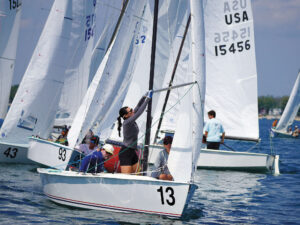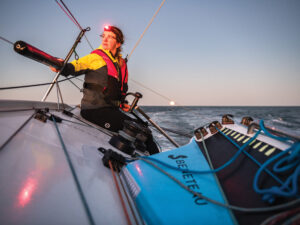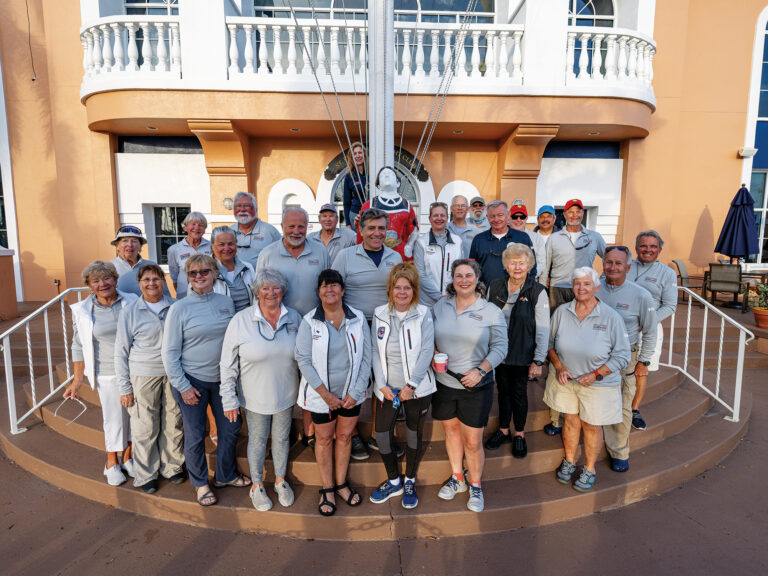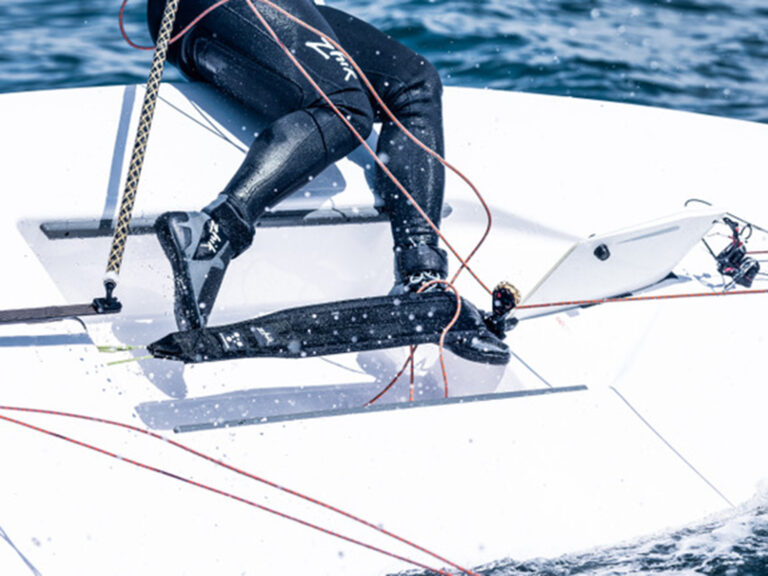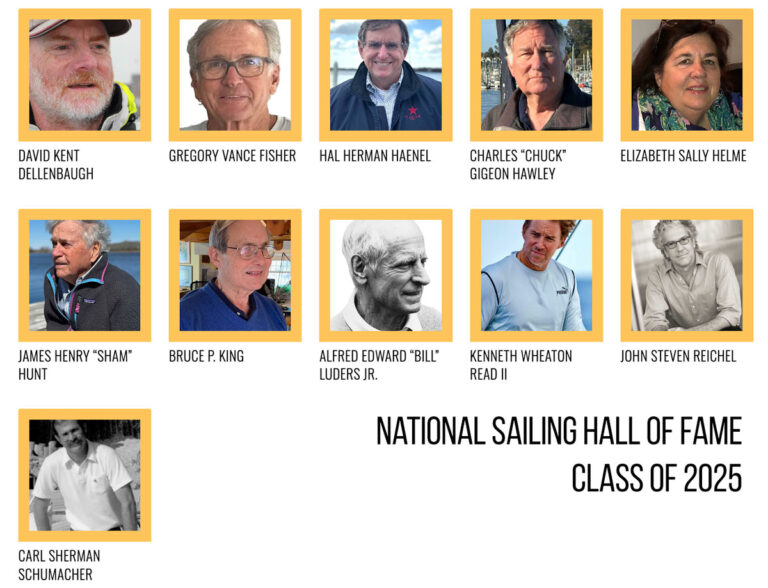The Olympic Games have evolved into the most important sporting event in the world. Since the United States first sent a sailing team to the Games in 1932, American sailors have won more medals than any other country. But in recent years, medals have been harder to win; the United States earned a gold, a silver, and three fifth places in 2004. In 2008 our team will head to Qingdao, China, with tremendous potential but greater challenges than ever. So far, the reports from our U.S. Sailing Team members are good: Current College Sailor of the Year Mikee Anderson-Mitterling (of USC) placed first in the 470 at Kiel Week, and Paige Railey won in the Laser Radial at the Palma regatta. Other highlights include George Szabo, second in the Star at Kiel, Sally Barkow, first in the Yngling at Hyeres Week, and Athens silver medalists John Lovell and Charlie Ogletree, eighth in the Tornado Worlds. Head coach Gary Bodie says, “When you look at the history of our athletes gaining the podium in these events, this year is pretty impressive.” The bad news is we don’t have many sailors competing. How do we draw from the vibrant youth-sailing scene to bring along more of the next generation? I recently attended the Optimist Team Trials and the U.S. Youth Championships. For ESPN, I also arranged coverage of the collegiate Team Race and Coed North American championships. The number of talented and skillful sailors at each event was impressive, and many told me their future goals include Olympic campaigns. As a long-time supporter of Olympic participation and as a member of US SAILING’s Olympic Sailing Committee, this was music to my ears. But unfortunately, too many All-Americans and youth stars give it up after graduation because competing at the Olympic level is difficult financially, a problem the OSC has discussed at length. “We need to significantly increase our budget,” says OSC chair Dean Brenner. “We spend $1.3 million per year, but have been outspent by a 10-to-1 ratio by some of our competitors. The OSC is looking to double its budget by the end of the Quad (2008).” Beyond that, for 2012, Brenner says, “Our goal is to raise $10 million as an endowment.” To help achieve this, the OSC has established a yacht club and individual fundraising initiative. Supporters of the program will have opportunities to interact with the U.S. Olympic program and its athletes. For clubs, U.S. Sailing Team members will be available for clinics. New US SAILING Executive Director Charlie Leighton has made Olympic sailing a priority. “A successful Olympic team energizes the entire sport,” he says, “drawing in kids, who have many choices of sports to pursue. US SAILING’s Youth Championships and Junior Olympic programs can cultivate interest and take youth sailing to the next level, but first they need to want to get out on the water.” Leighton and Brenner have started fast, raising $250,000 from individuals and clubs in the first two months of the program. Where will this money be spent? The OSC can’t afford to pay athletes like other countries do, and as in the past, the committee will try to cover youth development, coaching, technological studies, weather info, logistics, clinics, etc. According to Brenner, some of the money raised should go to hiring two or three more coaches and cranking up the youth development program, but most should go as direct grants to sailors for boats and travel. Although athletes will still have to secure much of their own funding for boats and equipment, training, and travel overseas, this represents an important shift in our strategy for helping team members focus more on sailing and less on fundraising. As an example, 2004 Laser Olympian Mark Mendelblatt, of St. Petersburg, Fla., has sailed in three U.S. Laser Trials since graduating as a three-time All-American from Tufts. He fnished third in ’96, second in ’00, and first in ’04, then going to Athens where he placed eighth. Now 33, Mendelblatt has moved to the Star. Last winter he won the Bacardi Cup, establishing himself as one of America’s best hopes for a medal in 2008. Mendelblatt tells me that to be in contention he needs $250,000 to buy two boats and campaign in China, Europe, and in the United States. Based on his past success and dedication, this sailor deserves support. There are many avenues to helping sailors like Mendelblatt. To learn more about US SAILING’s programs, visit www.ussailing.org/olympics/fundraising. Some clubs and other sailing associations have their own foundations to raise money for promising local sailors. And some sailors have their own fundraising programs. There are many ways to contribute, and as Brenner says, “Every donation counts, no matter the size.”
